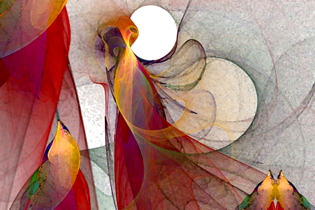“The Art of the Luminous Particular”
“The Art of the Luminous Particular”
by Chet Raymo
by Chet Raymo
"It was a love affair that lasted till the end. Donald Hall, the poet, was 19 years her senior when he married his former student in 1972. Jane Kenyon went on to be an esteemed poet in her own right. Hall quit his job at the University of Michigan and the couple moved to his grandparents' farm at Eagle Pond in New Hampshire, where they lived until Kenyon's death of leukemia in 1995. Hall is himself a cancer survivor, and Kenyon, on the evidence of her poems, was prone to depression. But their respective poems leave no doubt as to the loyalty and passion of their relationship.
I'm not the biggest fan of either Hall's or Kenyon's poetry, but Hall's little memoir of his life in poetry, Unpacking the Boxes, is a favorite read. Kenyon's final volume of new and selected poems, Otherwise, chosen by the poet on her deathbed, often comes down from my shelf. Her dark angels are never far below the surface. Her bright angels shine in their luminous auras. Hall added an "Afterward to Otherwise," recounting the salient features of Kenyon's life. He says her poetry "gathered resonance and beauty as she studied the art of the luminous particular."
I love that phrase: The art of the luminous particular. It is the thing that separates poetry from science. Science, of course, as it must, examines particulars - this organism, this rock, this star. But the scientist is looking for the universal principle of which the particular is only a typical and ultimately dismissible manifestation. For the poet, the particular is everything, different from every other particular, and full and complete within itself. It may stand as a symbol for a generality beyond itself, but the generality is only of interest insofar as it illumines the particular.
I wrote yesterday of mortality and immortality. Science pursues the immortal, the immutable laws and principles that have been at work since the beginning of time. Every particular must die. Every star, every mountain, every human. Living contentedly with our own mortality must surely mean studying the art of the luminous particular, letting the luminosity of the universe fill our time alive so that even our own particularity becomes - insofar as we can make it so - luminous. Kenyon has a poem with an almost William Carlos Williams reverence for particulars, called “Now That We Live:”
I'm not the biggest fan of either Hall's or Kenyon's poetry, but Hall's little memoir of his life in poetry, Unpacking the Boxes, is a favorite read. Kenyon's final volume of new and selected poems, Otherwise, chosen by the poet on her deathbed, often comes down from my shelf. Her dark angels are never far below the surface. Her bright angels shine in their luminous auras. Hall added an "Afterward to Otherwise," recounting the salient features of Kenyon's life. He says her poetry "gathered resonance and beauty as she studied the art of the luminous particular."
I love that phrase: The art of the luminous particular. It is the thing that separates poetry from science. Science, of course, as it must, examines particulars - this organism, this rock, this star. But the scientist is looking for the universal principle of which the particular is only a typical and ultimately dismissible manifestation. For the poet, the particular is everything, different from every other particular, and full and complete within itself. It may stand as a symbol for a generality beyond itself, but the generality is only of interest insofar as it illumines the particular.
I wrote yesterday of mortality and immortality. Science pursues the immortal, the immutable laws and principles that have been at work since the beginning of time. Every particular must die. Every star, every mountain, every human. Living contentedly with our own mortality must surely mean studying the art of the luminous particular, letting the luminosity of the universe fill our time alive so that even our own particularity becomes - insofar as we can make it so - luminous. Kenyon has a poem with an almost William Carlos Williams reverence for particulars, called “Now That We Live:”
"Fat spider by the door.
Brow of hayfield, blue
eye of pond.
Sky at night like an open well.
Whip-Poor-Will calls
in the tall grass:
I belong to the Queen of Heaven!
The cheerful worm
in the cheerful ground.
Regular shape of meadow and wall
under the blue
imperturbable mountain."
Brow of hayfield, blue
eye of pond.
Sky at night like an open well.
Whip-Poor-Will calls
in the tall grass:
I belong to the Queen of Heaven!
The cheerful worm
in the cheerful ground.
Regular shape of meadow and wall
under the blue
imperturbable mountain."
- http://blog.sciencemusings.com/

0 Response to "“The Art of the Luminous Particular”"
Post a Comment